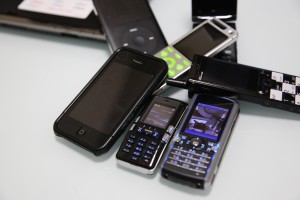Japan’s Cellular Evolution: A Brief History
Cell phones in Japan have always been a step ahead. This is a testament to the country’s innovative spirit and electronic prowess. From the humble beginnings of car phones in the late 1970s to today’s sophisticated devices, Japan’s cell phones has seen remarkable advancements.
Market Leaders: Japan’s Top Cellular Providers
Several major players dominate the Japanese cell phone market: NTT DoCoMo, au, Softbank Mobile, Emobile, and Willcom (PHS). As of May 2011, NTT DoCoMo led the pack with over 58 million subscribers. In contrast, au had 33 million, SoftBank Mobile had 25 million, Willcom had 3.8 million, and Emobile had 3.1 million.
A World of Features: Japanese Cell Phones vs the Rest
The average Japanese cell phone packs a multitude of features, including internet access, email, and much more, unlike many standard phones in the U.S. You can even use these devices as boarding passes and access unique tools like body-fat calculators. While U.S. smartphones like the iPhone have started to incorporate similar features, Japan has maintained its lead in mobile technology for years. For example, people in Japan have commonly used cell phone boarding passes since at least 2008.
Japanese cell phones consistently boast capabilities that other countries have only recently adopted on a large scale. Manufacturers introduced email capabilities in 1999, cameras in 2000, 3G networks in 2001, full music downloads in 2002, electronic payments in 2004, and digital TV in 2005. Beyond these basics, Japanese phones can act as personal computers, offering web browsing, PDF and word file support, and even serving as gaming devices for titles like Final Fantasy. They also provide ground wave television, digital cash services, loyalty card functionality, and biometric security features like face recognition and fingerprint scanning.
The Cell Phones Market in 2010: Sharp Takes the Lead
According to Zaikei News Paper, Japan saw a staggering 36 million cell phone sales in 2010. Sharp emerged as the top seller, capturing 24.5% of the market share. Fujitsu/Toshiba secured second place with 17.1%, followed by NEC/Casio, and Panasonic.










Comments